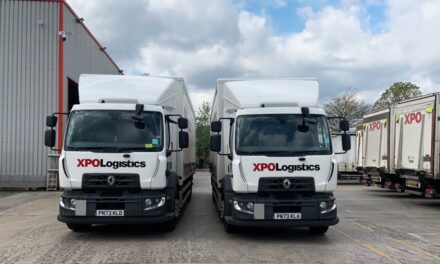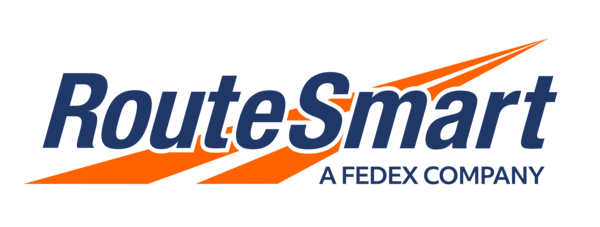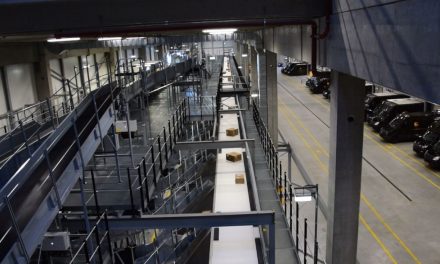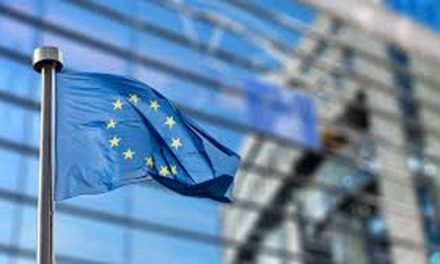
Simon Group results
RNS Number:3946S
Simon Group PLC
5 March 2002
5 March 2002
SIMON GROUP plc
("Simon," "the Company" or "the Group")
Preliminary Results for the Year Ended 31 December 2001
2001 2000
(restated)
£m £m
* Continuing group turnover 148.1 151.9
* Continuing operating profits (pre exceptional) 10.6 10.6
* Profit before tax 54.8 14.6
* Basic earnings per share 29.4p 4.5p
* Annual dividend* 1.30p 1.20p
*two interim dividends for 2001
Highlights
• Three scheduled Ro/Ro ferry services now operating from Humber Sea
Terminal (HST). Phase II preparations underway.
• Simon-Carves sold for £13.1m.
• Interest in Robertson Research Holdings sold for £29.4m.
• Restructuring programme complete.
Michael Davies, Chairman, commented:
"In the last half of 2001 Simon Group undertook a strategic review of its
businesses. The Board had recognised that following the sales of the
Simon-Carves business and the Company's interest in Robertson Research that it
would be necessary either to make a significant strategic acquisition or to seek
a merger partner or buyer for the Group. In order to maximise shareholder value
the Board has decided to offer the Group for sale. This process is well
underway.
The Group is well positioned to achieve growth in the medium term both
organically and through acquisitions in its ports, logistics and storage
businesses."
As Simon is in an offer period, the Company will not host its customary analysts
presentation.
Enquiries
Gavin Anderson & Company Tel: 020 7457 2345
Liz Morley / Rebecca Penney
Further information at: www.simongroup.plc.uk
SIMON GROUP plc
CHAIRMAN'S STATEMENT
I am pleased to report that during the year Simon completed its restructuring
programme with the disposals of Simon-Carves' business and our 49.9 per cent
shareholding in Robertson Research Holdings Limited ("Robertson Research"), both
for good prices. The proceeds from those disposals were used to reduce the
Company's debt, such that at 31 December the net debt position was £24.8
million, representing gearing of 16.6 per cent – the lowest for many years.
I reported in the interim report last August that at 30 June 2001 the continuing
businesses were behind the same period in 2000. I am now pleased to report that
trading in Simon's continuing businesses recovered in the second half. The
result for the year as a whole was level with 2000.
Strategic Review
Shareholders will have seen from the Company's announcements of 14 and 31
January 2002 your Board's confirmation that, following a review of the strategic
options open to the Company, Simon had decided to invite interested parties to
make offers for the Company. The Board had long recognised that following the
sales of the Simon-Carves business and Robertson Research stake, both of which
were earnings dilutive, it would be necessary either to make a significant
strategic acquisition or to seek out a merger partner or buyer for the Group.
The Board began working last Summer with Gleacher & Co to review strategic
options. This review consisted of evaluating, among other options,
acquisitions, recapitalisations, restructuring, additional capital investments
in new and existing business initiatives and the divestment of business units.
At the conclusion of this review, Gleacher & Co recommended, and your Board
decided to pursue, a sale process as the optimal way to maximise shareholder
value.
This process is now well underway. Gleacher & Co began distributing Confidential
Information Memoranda to a number of qualified parties in February. Certain of
these parties will be invited to conduct due diligence and put offers to the
Board, which after careful evaluation may recommend an offer to shareholders.
Gleacher and the Board are optimistic about the outcome of this process.
However, in the event that the process does not produce a valuation of the
business that would enable the Board to recommend an offer, Simon will continue
with the implementation of its strategy of investing in and developing its
ports, logistics and storage businesses through acquisitions and organic growth.
Results
Group turnover for the year on continuing activities was marginally lower at
£148.1 million (2000 : £151.9 million), with the shortfall arising in the
Logistics Division. Exceptional profits of £45.1 million (2000 : £2.4 million)
resulted in a profit before tax of £54.8 million (2000: £14.6 million). Basic
earnings per share were 29.4 pence (2000 restated: 4.5pence) and earnings per
share before goodwill and exceptional items were 3.5 pence (2000 restated: 3.5
pence). Cash flow and interest cover remained strong despite Simon's continuing
programme of investment. Following the disposals made during the year, debt
fell by £33.2 million to £24.8 million at the year end giving gearing of 16.6
per cent.
Dividend
In view of the anticipated timing of the sale process, the Board has not yet
fixed the date of the Company's Annual General Meeting, at which shareholders
would normally approve the Company's final dividend. Consequently the Board has
resolved to pay a second interim dividend of 0.87 pence per Ordinary share,
which, when taken with the first interim dividend already paid, will give a
cumulative dividend for 2001 of 1.3 pence per Ordinary share (total dividend
2000: 1.2 pence). The second interim dividend will be paid on 16 May 2002 to
Ordinary shareholders on the register on 19 April 2002. At the present time it
is not anticipated that any final dividend will be recommended for 2001.
Board Appointment
T J M Chadwick was appointed to the Board by the Directors as an additional
Independent Non-executive Director with effect from 4 March 2002. In accordance
with the Company's Articles of Association, T J M Chadwick will offer himself
for re-election at the Company's next general meeting.
Pensions
On 2 July 2001 Simon announced that the Trustees of the Simon Group Pension Fund
("the Fund") had insured their liability to pay the Fund's then 3,161 pensioners
with Legal & General for approximately £150 million. This transaction
significantly improved both the security of the pensioners and the risk of a
claim on Simon to make up any future deficit in the Fund. Simon also announced
that, in the light of the pension buy-out and the future adoption of FRS17, it
would recognise pension credits which had arisen under SSAP24 and which had not
been accounted for in Simon's profits since 1996. This gave rise to an
exceptional profit of £11.2 million and a further £2.2 million net pension
credit in the financial year ended 31 December 2001. These issues had no direct
cash impact in the year. When adopted, FRS17 will change the basis for
accounting for pensions in the future.
Share Capital
At the Extraordinary General Meeting held following Simon's Annual General
Meeting on 10 May 2001, members unanimously voted in favour of a resolution to
cancel all of Simon's remaining preference shares, consisting of 922,407 6 per
cent cumulative preference shares and 700,000 5.4 per cent cumulative preference
shares. The cancellation was confirmed by the Court on 6 June 2001.
Simon-Carves and Robertson Research Disposals
Following the separate sale of Simon-Carves' Manchester headquarters for £7.3
million, the business of Simon-Carves was sold in May 2001 for £13.1million. In
July 2001, Simon announced the completion of the sale of its 49.9 per cent stake
in Robertson Research to Fugro NV of the Netherlands for £29.4 million.
Together these two last disposals, along with the disposal of an interest in a
US partnership, LG Industries LLP, gave rise to exceptional profits of £33.9
million.
Forthline
On 1 March 2002, Simon announced that Seawheel had completed the acquisition of
the business of Forthline from Forth Ports for a consideration of £325,000.
Forthline operates a door to door Lo/Lo container service between Grangemouth on
the East Coast of Scotland and Rotterdam. In addition Seawheel agreed to enter
into a ten year stevedoring contract at Grangemouth with Forth Ports. Forthline
extends Seawheel's already extensive route network and enhances the service that
it is able to offer its customers.
Prospects
With the commencement of Ferryways' new HST to Oostende Ro/Ro service in January
2002, and with the expectation that construction of Phase II of HST will
commence in the second half of 2002, the Directors believe that the returns on
the long term investment in this exciting development project will grow
substantially as further new customers are secured. With three scheduled Ro/Ro
services now operating from HST, there remains room now for only one further Ro/
Ro customer before Phase I is at full capacity. Throughout the Ports Division,
volumes were lower in the first two months of 2002 than they were in the
corresponding period in 2001.
Seawheel has made a poor start to the year, partly for seasonal reasons. In
addition volumes on its East Coast routes have been lower than expected.
However, with new senior management in place in Seawheel it is anticipated that
its performance will strengthen as the year progresses.
Storage experienced an increase in inquiry activity in the final quarter of
2001. This has resulted in a number of new contracts being secured which have
utilised a substantial proportion of the vacant tankage, particularly at
Immingham. Storage has made an encouraging start to the year which management
will seek to build on.
Whilst undoubtedly the sale process currently underway will result in a
significant diversion of resource and management time, the Directors believe
that the Company is better positioned currently than it has been for many years
to achieve growth in the medium term both organically and through acquisitions
in its now fully focused integrated ports, logistics and storage businesses.
A M DAVIES
CHAIRMAN
5 March 2002
SIMON GROUP plc
CHIEF EXECUTIVE'S REVIEW OF OPERATIONS
Ports Division
2001 marked the first full year's operations of HST's river terminal which had
commenced its Ro/Ro operations in October 2000. During the year the terminal
established its reputation as a highly competitive facility serving the Ro/Ro
ferry market across the North Sea. Stena Line, with which a ten year agreement
had been signed in 2000, successfully developed its route between Hook of
Holland and HST, increasing its volumes throughout the year and increasing its
service frequency from six to seven scheduled sailings per week in October 2001.
The Ro/Ro terminal's second customer, CCTL, which is a division of Seawheel,
also developed its service successfully throughout the year operating four
sailings per week between the port of Hamburg and HST. Discussions to bring
further customers to HST were successful with a five year agreement being signed
with Ferryways which commenced its six sailings per week scheduled Ro/Ro service
between its home port of Oostend and HST in late January 2002.
HST has attracted great interest in the transport sector because of the
competitive advantages of its river berths coupled with the state-of-the-art
infrastructure of the terminal including its information technology systems and
security measures, and its freehold land available for expansion. We are also
very pleased to report that the terminal has maintained an outstanding safety
record with no serious accidents or incidents involving port employees or
customers since its opening.
Landside facilities to support the growing freight volumes moving through HST
were increased during the year from 34,000 m2 of hard-standing in January 2001
to 59,000 m2 in December 2001. Work is also continuing to secure the approvals
and consents necessary to launch Phase II of HST which will add two further
river berths to the facility.
The traditional three berth facility for coastal vessels operated under the name
Killingholme Wharfage Company improved its position during the year securing new
business in fertilisers, paper, minerals and timber, in addition to steel which
remained the main cargo handled. These were important achievements in a
marketplace subject to fierce competitive pressures.
Encouraging progress was made in contract warehousing at HST. During the year
contracts were won for the handling of foodstuffs, paper and speciality
chemicals, and plans are in place further to increase warehousing capacity
during 2002 through the additional exploitation of HST's available substantial
brown-field land-bank.
Simon Distribution generated new business during 2001 involving the haulage of
some 800,000 tonnes of product. The business was impacted in April when Conoco,
an important customer for warehousing and distribution, suffered an explosion at
its Humber refinery. Trading returned to normal later in the year and
management were successful in broadening the client base with important
contracts having been secured with Huntsman and the London Metal Exchange.
At Port Sutton Bridge the weather-related collapse of the port's niche market
handling exports of grain, exacerbated by the foot and mouth epidemic, created a
very challenging trading environment. It is expected that grain volumes will
return during 2002 with a strong grain harvest being predicted. The port's
reputation for service helped management secure a new ten year stevedoring and
bespoke warehousing facilities contract with Broste of Denmark which will
commence operations during the second half of 2002. The shortage of grain
export business during the year was partly offset by new steel business and a
creditable trading profit was achieved despite difficult circumstances.
Logistics Division
As reported in the Interim Report in August 2001, Seawheel returned to
profitable trading in the first half of the year having made losses in January
and February. The trend continued with Seawheel returning a trading profit of
£0.4m for the year as a whole.
Trading conditions remained challenging throughout the year but the performance
of the Spanish service operated through Seawheel's joint venture with Vapores
Suardiaz of Spain was particularly strong.
Marine Terminals resumed providing limited stevedoring services to Seawheel in
the Port of Dublin in December 2000 and in February 2002 Seawheel transferred
its Continental service to join its Spanish service already at a terminal in
the Port operated by another stevedore, Portroe.
During 2001 Seawheel's Irish-based business enhanced further its logistics
development by winning a three year contract from American-owned fibre producer
Wellman International. Under the terms of the contract, Seawheel is responsible
for moving almost 200,000 tonnes of raw materials and finished goods per annum,
and has been appointed as logistics manager for the complete supply and
distribution of these materials. In addition to these distribution
responsibilities, Seawheel will also manage up to seven warehousing and
distribution centres on behalf of Wellman in Ireland, the UK and Germany.
Building on the contract the intention is for Seawheel to expand further into
the added value supply chain providing multiple services for its customers.
In January 2002, Paul Brown joined Seawheel as its new Managing Director, having
spent over 12 years in the logistics industry and having previously been a
Divisional Development Director of Exel plc. On 1 March 2002, the Group
announced that Seawheel had acquired the business of Forthline from Forth Ports
plc for a consideration of £325,000. Forthline operates a door to door Lo/Lo
container service between the port of Grangemouth on the East coast of Scotland
and Rotterdam. Forthline represents a very useful 'bolt-on' acquisition
bringing with it valuable customers and extending Seawheel's European route
network.
CCTL made progress during the year and added value within the Simon Group
through its scheduled four Ro/Ro sailings per week to the HST from the port of
Hamburg. CCTL traded at around break-even for the year as a whole and with
management changes following its acquisition, we believe it is well positioned
to develop its volumes of both container and unaccompanied trailer based trade.
Seawheel's marketplace remains highly competitive with the balance between
Eastbound and Westbound volumes continuing to be a major issue. Currency issues
involving the strength of Sterling against the Euro continue to add to the
problems of balance and the Group has long-term hedging programmes in place
covering both currency, dollars and euro, and oil. Investment programmes
continue, particularly for the upgrading of Seawheel to 45 ft box equipment to
deliver the higher pay loads that are becoming a standard market expectation.
Storage Division
2001 was a difficult year for the international petrochemical and petroleum
industries. The Storage Division, therefore, experienced challenging trading
conditions that particularly affected its terminal at Immingham. Here there was
structural change following the merger of three customers, Total, Fina and Elf
in 2000 as well as a decline in throughput requirements from the chemical
industry sector. However despite these problems the Group's terminal at
Immingham continued to make good returns albeit at a lower level than in recent
years. In October 2001 Simon commissioned a new eight kilometre pipeline
constructed to supply Huntsman Tioxide with sulphuric acid under a ten year
contract with Ineos Chlor. Enquiries in the last quarter of the year have led
to a substantial take-up of spare capacity.
The Division's wholly owned facility at Seal Sands on the Tees was less affected
by the above adverse market pressures. Further progress was made in the
development of the Tees-based Riverside facility bought from ICI in 1999 and
where, new road loading facilities commenced operations in July 2001. This,
coupled with a new road access way and the building of the first completely new
tankage on the site significantly enhanced the capabilities of the terminal.
The Division's three remaining small terminals on the Tyne, in Cumbria and on
the Shannon in Ireland all traded profitably although the first two both
experienced a decline as the result of client plant closures.
Simon Management, the Division's facilities management arm, had a steady year
during which several important contracts came up for renewal and were retained.
Included in this was an expanded contract to handle the full logistics chain for
aviation fuel from importation by sea via tank storage to final delivery into
aircraft. Simon Management also made progress with the provision of engineering
and training services during the year and is now providing software solutions to
customers based upon its own tried and tested in house systems.
Lewis Tankers encountered difficult trading conditions in the traditional road
haulage sector. However, the company complements the product offerings
available from the Storage Division and opportunities are being pursued that
involve the provision of storage, facilities management, and distribution
services within a single contract.
Restructuring Programme
During 2001 we were pleased to announce three deals that completed the
restructuring of the Simon Group which commenced in late 1993 and involved a
total of 35 separate divestments and proceeds of approximately £200 million.
First, in January 2001 we completed the sale of Simon's interest in Sim-Chem
House, the headquarters of Simon-Carves for £7.3 million. Second, in May 2001
we announced the sale of the business of Simon-Carves to SembCorp Engineers and
Constructors of Singapore for £13.1 million. We had thereby achieved a total
price of £20.4 million for the remaining Simon-Carves business having previously
exited from other Simon-Carves businesses worldwide, notably in Australia.
Third, in July 2001 we completed the sale of Simon's 49.9% shareholding in
Robertson Research, to Fugro of the Netherlands for £29.4 million. The total
proceeds of £49.8 million resulting from these sales considerably strengthened
the Group's balance sheet reducing gearing to 16.6% at the year end. With these
disposals and Phase I of the HST having been developed at a cost of some £26
million, the Board considered that a milestone had been reached in the Group's
affairs. It was against this background that the Board's strategic review of
the options available to the Group going forward was initiated as referred to in
the Chairman's Statement.
M C S DIXSON
CHIEF EXECUTIVE
5 March 2002












